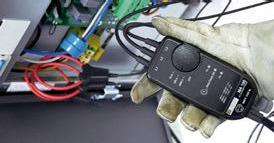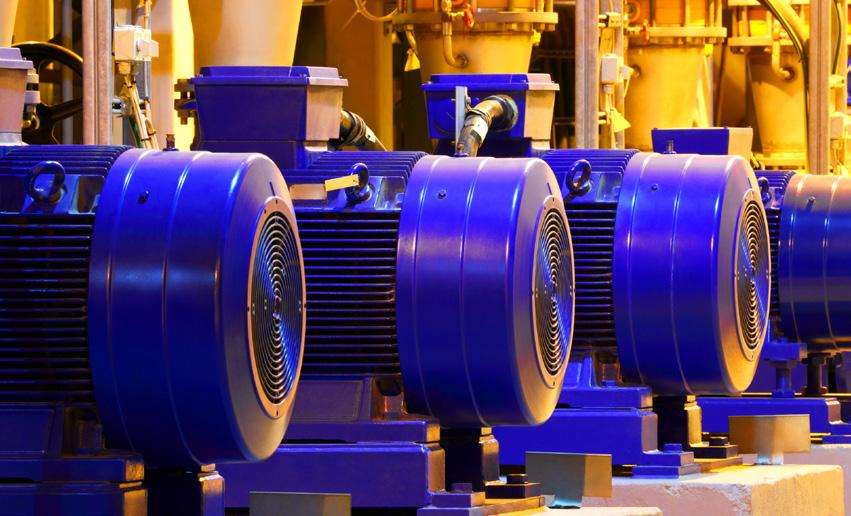ENERGY EFFICIENCY
Motorise your energy savings It’s almost impossible to think of a business that doesn’t use electric motors. In industry, they power the manufacturing processes, and in virtually every commercial building they drive the systems that provide a comfortable working environment. Motors also use a lot of energy. According to the Carbon Trust, a 2.2 kW motor typically costs around £2,300 a year to run. This makes energy efficiency of motors a key concern for every business owner and manager, says Julian Grant of Chauvin Arnoux.
t’s widely reported that motors consume around half of all electricity used worldwide, and that they account for more than two-thirds of the electricity consumed by industry. The actual figures vary a little according to the source, but that really doesn’t matter. The take-home lesson is that, whatever business you happen to be in, you’re almost certain to be spending a lot of money on electricity to power your motors and, in addition, the energy they consume is adding to your carbon footprint. These are two excellent reasons to look at motor efficiency, but how do you go about it? Paradoxically, the first step doesn’t even involve identifying the individual motors on your site. Instead, it’s to monitor the electrical supply, ideally using a portable energy logger (PEL). Two important things to look for are voltage imbalance between the phases and poor power factor. A voltage imbalance of just a few percent will reduce the efficiency of every motor on your site,
I
28 Electrical Review | April / May 2020
so it’s well worth identifying and correcting. The corrective action may, for example, involve redistributing single-phase loads between the phases so that the phases are loaded more equally. I won’t go into detail here about power factor, but in summary, the power consumed by a motor (apparent power) is made up of two components: active power and reactive power. You pay for both, but only the real power does useful work. The ratio of the active power to the apparent power is known as the power factor, and the nearer this is to 1.0, the less money you’re spending on useless reactive power. If a site has a poor power factor, relatively inexpensive equipment can be installed to bring it nearer to 1.0 and cut energy costs. Power factor correction can also be provided for individual motors, although this is usually only worthwhile with large motors, and for groups of motors that usually operate at the same time.





